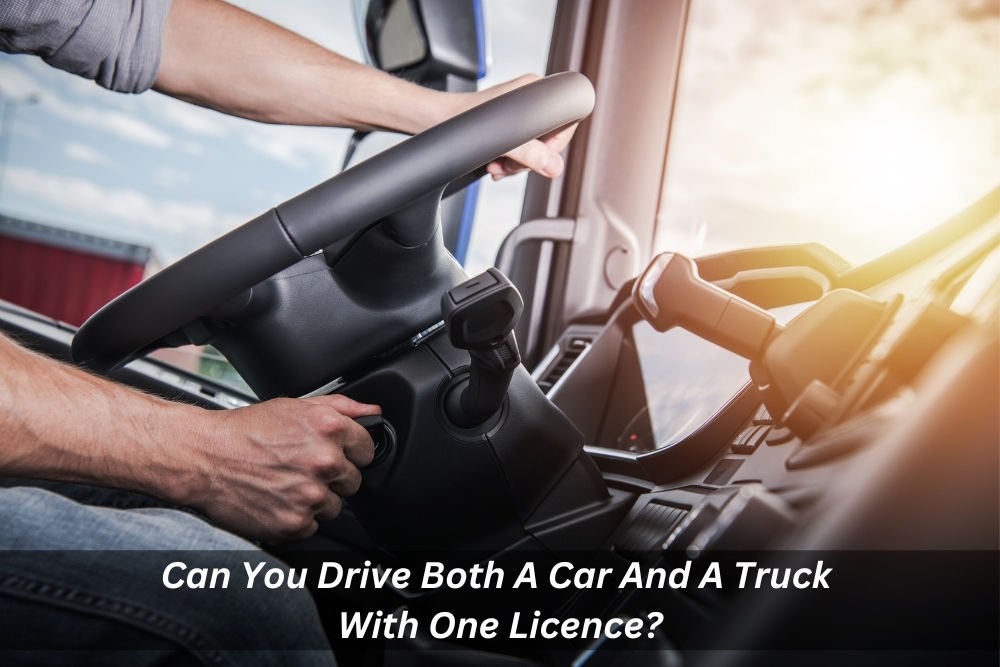Are you wondering if there are trucks you can drive on a car licence? If you’re curious about the options available and how you can legally operate a truck using your existing car licence, then you’ve come to the right place. In this blog, we’ll explore the topic of “trucks you can drive on a car licence” and delve into the details of obtaining an LR truck licence, understanding driver licence classes, and the benefits of a light rigid licence (licence LR). So buckle up and get ready to learn more about the exciting world of driving both cars and trucks on the same motor vehicle licence!
What are the different types of driver’s licences in Australia?
In Australia, there are several different types of driver’s licences. Depending on the size and type of vehicle you wish to drive, the licence requirements can vary greatly.
At the most basic level is the car licence, which allows drivers to operate any vehicle up to 4.5 tonnes GVM (Gross Vehicle Mass). This is typically sufficient for most regular cars and vans. To obtain a car licence, applicants must pass a written test as well as a practical driving test.
For larger vehicles such as trucks and buses, there are two main licence classes that one would need in order to legally operate them; the Light Rigid (LR) Licence and the Medium Rigid (MR) Licence. The LR licence allows drivers to operate rigid vehicles with a GVM of up to 8 tonnes, while the MR licence allows drivers to operate vehicles with a GVM of up to 12 tonnes.
In addition, there are also heavy vehicle licences that allow drivers to operate vehicles over 12 tonnes GVM such as prime movers or road train trucks. To obtain a heavy vehicle licence, applicants must pass written tests and complete 120 hours of supervised driving over at least 12 months.
What are the licence requirements for driving cars and trucks?
In order to legally drive cars and trucks in Australia, the driver must possess the appropriate driver’s licence for the vehicle they are operating.
- For cars, a car licence is required, which covers vehicles up to 4.5 tonnes GVM.
- If you wish to drive larger or heavier vehicles such as trucks or buses, you will need to apply for a Heavy Vehicle (HV) licence covering vehicles above 15 tonnes GVM. Different HV licences cover different types and sizes of vehicles, with classes ranging from C to G.
In order to obtain an HV licence, drivers usually need to take a practical driving test as well as complete the necessary theory assessments before being granted their licence. Some states also require applicants for an HV licence to have held a car licence for at least 12 months prior to applying.
Are there any trucks that you can drive with a car licence?
In Australia, there are certain types of trucks that you can drive with a car licence. The commonly used term for these trucks is ‘light rigid’ vehicles, and most people refer to the licence needed to operate them as the Light Rigid (LR) Licence. Light rigid vehicles have a Gross Vehicle Mass (GVM) of up to 8 tonnes, whereas heavier trucks require a Medium Rigid (MR) Licence or Heavy Vehicle (HV) Licence.
In order to obtain an LR licence, applicants must first obtain a learner permit and complete a practical driving test. After achieving this, individuals can operate light rigid vehicles on public roads without needing any additional testing or training. It is important to note, though, that drivers with an LR licence still have restrictions on operating specific types of heavy vehicles.
In summary, it is possible to drive both a car and a truck with one licence in Australia, provided the truck is a light rigid vehicle. Before operating other types of trucks and buses on public roads, it will be necessary to obtain additional licencing and undergo training.
What are the benefits and considerations of having both a car and truck licence?
Having a car and truck licence can be extremely beneficial in many ways. Not only does it give you the flexibility to drive both cars and trucks, but it also opens up a range of employment opportunities that would not be available if you only had one licence. For example, you may be able to apply for jobs that require light rigid vehicles or prime movers, which generally require an LR or HR licence respectively. In addition, having both licences may also make travelling long distances easier as it allows you to switch between car and truck driving as needed.
However, there are also some considerations to keep in mind when obtaining a car and truck licence. Depending on the state, applicants for an HV licence may need to hold a car licence for at least 12 months before applying, so it is essential to plan ahead. Additionally, obtaining an HV licence typically requires completing a practical driving test and the necessary theory assessments, which can be time-consuming and costly.
In summary, it is possible to drive both cars and trucks with one licence. Depending on the type of vehicle you are operating, different licence classes will apply such as car licences for vehicles up to 4.5 tonnes GVM or Heavy Vehicle (HV) licences for vehicles above 15 tonnes GVM. Obtaining an HV licence typically requires taking a practical driving test and passing the necessary theory assessments, so it is important to plan ahead and consider the costs involved. Having both a car and truck licence can be extremely beneficial as it gives you the flexibility to drive both types of vehicles and may open up a range of employment opportunities.
What restrictions apply to trucks that can be driven on a car licence?
- Weight Limit: Typically, trucks that can be driven on a car licence have a maximum gross vehicle weight rating (GVWR) or gross combination weight rating (GCWR) limit. This limit can vary depending on the country or region’s regulations.
- Size Limit: There may be restrictions on the dimensions of trucks, including height, length, and width. Again, these restrictions can vary based on local regulations.
- Passenger Limit: In some cases, there may be restrictions on the number of passengers allowed in a truck that is being driven on a car licence. This limit may depend on the seating capacity designated by the truck manufacturer.
- Cargo Limit: There may be restrictions on the type and amount of cargo that can be transported in a truck operating under a car licence. Certain hazardous or oversized cargo may require additional permits or licences.
- Licencing Requirements: Drivers must hold a valid driver’s licence that allows them to operate trucks within the specified weight and size limits. Specific types of trucks, such as those carrying hazardous materials or towing trailers, may require additional endorsements or certifications.
It is important to note that restrictions on trucks driven on a car licence can vary considerably based on local regulations. It is advisable to check with the appropriate local authorities or licencing agencies for specific restrictions applicable in your area.
Conclusion
To sum up, in Australia, it is possible to drive both cars and trucks on one licence. However, drivers must ensure they have the appropriate licence class for the type of vehicle they are driving and plan ahead to obtain both licences if necessary. It is important to note that there are restrictions and limitations when it comes to driving trucks on a car licence, so it is crucial to understand them in order to drive safely and legally while taking advantage of the trucks you can drive on a car licence. By acquiring both licences and adhering to the regulations, individuals can achieve significant benefits and become really safe drivers.
Visit Core Truck Driving School today to learn how you can earn a single licence that allows you to drive both cars and trucks. Take advantage of our comprehensive training program for truck driver’s licence in Australia and experienced instructors to kickstart your career in the transportation industry. Don’t miss out on this opportunity to expand your driving capabilities and increase your job prospects. Get in touch with us today and pave the way to a successful future in truck driving.


